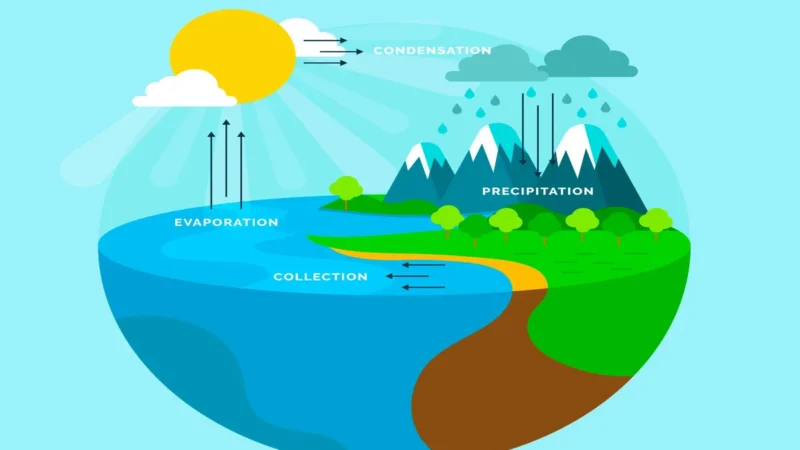Genetic Biodiversity: Understanding its Importance for Ecosystem Resilience

Genetic biodiversity, also known as genetic variation or genetic diversity, refers to the variety of genes present within a population, species, or ecosystem. It encompasses the diversity of genes, alleles, and genetic traits that exist in a given biological system. Genetic biodiversity plays a crucial role in maintaining the resilience, adaptability, and long-term survival of ecosystems and the species within them. In this article, we will explore the significance of genetic biodiversity, its drivers, and the potential consequences of its loss.
I. The Importance of Genetic Biodiversity
a. Enhancing Adaptability and Resilience
Genetic biodiversity ensures that a population possesses a range of genetic traits and variations. This diversity enables species to adapt to changing environmental conditions, such as climate change or emerging diseases. Populations with higher genetic variation are more likely to have individuals with advantageous traits that can withstand and overcome these challenges.
b. Providing Buffer Against Extinction
Genetic diversity acts as a buffer against extinction risks. In small populations, genetic bottlenecks can occur, leading to reduced genetic variation. This decrease in diversity makes species more vulnerable to disease outbreaks, reduced reproductive success, and other threats. Genetic rescue, which involves introducing genetic material from other populations, can help restore genetic diversity and prevent extinction.
II. Drivers of Genetic Biodiversity Loss
a. Habitat Loss and Fragmentation
Human activities such as deforestation, urbanization, and land conversion contribute to habitat loss and fragmentation. These processes restrict the movement of species, leading to reduced gene flow between populations. Consequently, isolated populations face increased inbreeding and reduced genetic diversity, making them more susceptible to disease and environmental changes.
b. Overexploitation and Selective Breeding
Overexploitation of certain species for economic purposes, such as hunting or fishing, can result in the loss of genetic diversity. Similarly, selective breeding practices in agriculture and aquaculture focus on specific traits, leading to genetic erosion within cultivated populations. This loss of diversity reduces the species’ ability to adapt to changing environmental conditions.
III. Consequences of Genetic Biodiversity Loss
a. Reduced Resilience and Adaptability
Decreased genetic diversity limits a species’ ability to respond and adapt to environmental stressors. As a result, populations become more susceptible to diseases, reduced reproductive success, and lower survival rates, ultimately leading to species decline.
b. Impaired Ecosystem Functioning
Genetic biodiversity loss can disrupt the intricate interactions within ecosystems. As species decline or become less adaptable, it can lead to imbalances in trophic cascades, affecting the overall functioning and stability of the ecosystem. This disruption can have cascading effects on other species and ecosystem services.
Key Takeaways:
Genetic biodiversity is crucial for the long-term health and resilience of ecosystems. Its preservation is essential to ensure the adaptability and survival of species in the face of environmental changes. By understanding the drivers of genetic biodiversity loss and the consequences associated with it, we can take informed conservation measures to safeguard this invaluable resource.
FAQs related to Genetic Biodiversity
What is genetic biodiversity?
Genetic biodiversity, also known as genetic variation, refers to the diversity of genes, alleles, and genetic traits within a population, species, or ecosystem. It represents the variety of genetic material present in a biological system.
Why is genetic biodiversity important?
Genetic biodiversity is crucial for ecosystem resilience and species survival. It enhances adaptability, allowing species to respond to environmental changes. It acts as a buffer against extinction risks, improves disease resistance, and maintains the overall health and functioning of ecosystems.
How does habitat loss affect genetic biodiversity?
Habitat loss and fragmentation restrict the movement of species, leading to reduced gene flow between populations. This isolation can result in inbreeding and reduced genetic diversity, making species more vulnerable to diseases and environmental changes.
What is genetic rescue?
Genetic rescue involves introducing genetic material from other populations to restore genetic diversity in small or isolated populations. This practice helps prevent inbreeding and revitalizes the genetic health of endangered species, reducing the risk of extinction.
How does overexploitation impact genetic biodiversity?
Overexploitation, such as overharvesting or excessive selective breeding, can lead to the loss of genetic diversity. Harvesting certain species for economic purposes reduces their genetic variation, making them less adaptable to changing conditions.


